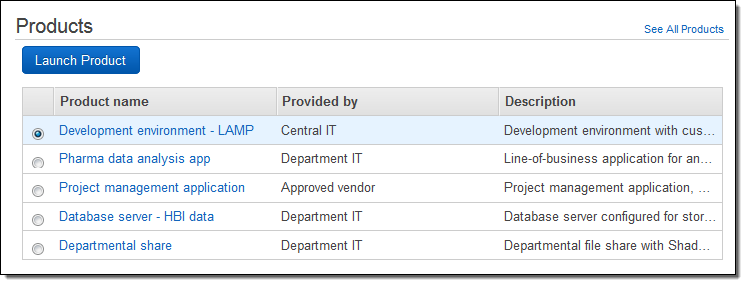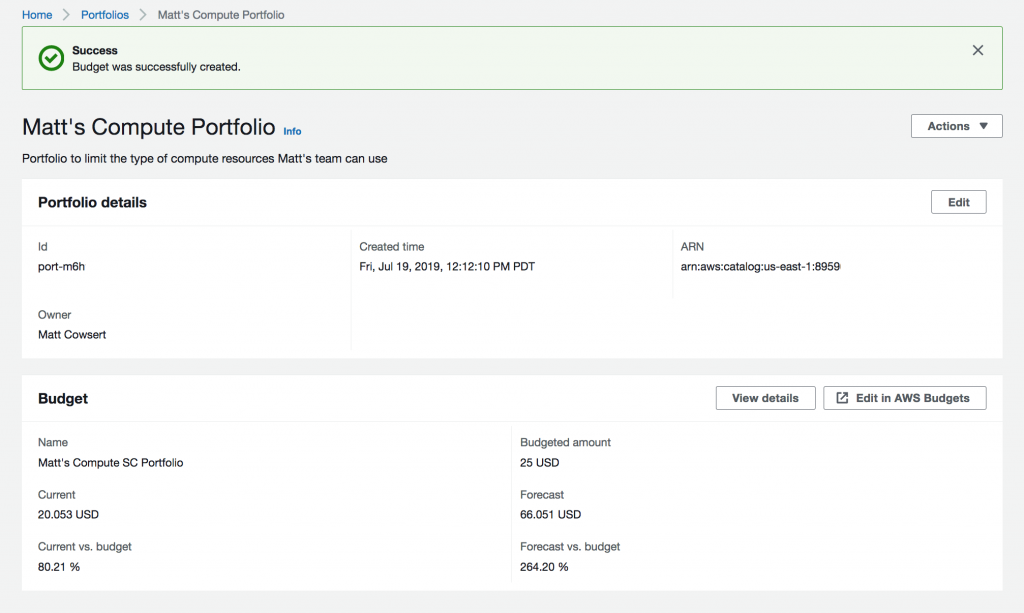You can now set and track budgets for AWS resources in Service Catalog, according to a new announcement by AWS.
Cloud teams have long loved AWS Service Catalog, which allows you to create a self-service catalog of pre-configured AWS resources that can be launched with the click of a button. But the danger has been that engineers can spin up too many resources — and forget to turn them off.
This latest announcement makes it easier for central administrators to set up budget guardrails against out-of-control cloud spend.
AWS Service Catalog + AWS Budgets
AWS Service Catalog, as we’ve discussed before, is essentially a list of AWS CloudFormation templates in a single interface, which allows engineers to launch any template with the click of a button. It can look something like this:

Sample AWS Service Catalog. Source: AWS
AWS Service Catalog makes it simple for central IT to provide other departments with approved templates and a single core team to launch pre-configured dev/test environments. There are existing governance controls in place. You can control access to templates, which region/AZ they can launch the resources in, the security settings of the launched resources, and more.
Now AWS has integrated AWS Service Catalog with AWS Budgets, a hub for creating, tracking, and inspecting budgets across multiple AWS services. That means that each product can be associated with a budget. Using the example above, let’s say Central IT decides that the Development environment – LAMP has a budget of $800. If usage exceeds that budget, Central IT can get an alert and also track historical usage of that product over time.

Sample AWS Budgets Dashboard. Source: AWS
How to Get Started
Once you already have some products or portfolios in AWS Service Catalog, here’s how to give them a budget.
- Activate cost allocation tags in the AWS Billing and Cost Management Console (see AWS Documentation)
- Give required users the ability to see billing information and receive SNS notifications by creating a budgets policy (see AWS documentation)
- Create a budget in the AWS Service Catalog console associated with a product or portfolio. Associate the appropriate tag to your budget.
- Once a budget is associated with a product, you can view information about the budget on the Portfolios page. This should look something like this:

Source: AWS
For a full explanation, visit AWS’s blog post announcing the AWS Budgets integration.
Conclusion
We’re big fans of AWS Service Catalog here at Logicworks. So we were especially excited to hear that we can now use AWS Budgets to track service costs and usage within AWS Service Catalog. AWS Service Catalog has become one of the most frequently requested services for new AWS customers and is now the go-to solution to manage a portfolio of AWS CloudFormation templates.
To learn more about how Logicworks can help you build, migrate, and operate AWS infrastructure, contact us or visit www.logicworks.com.


No Comments